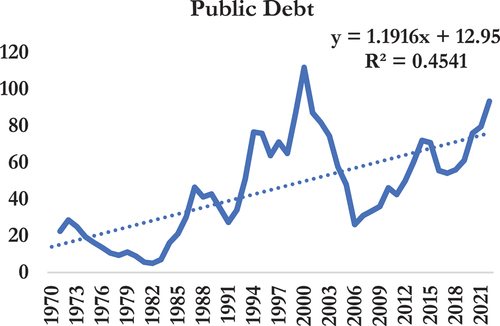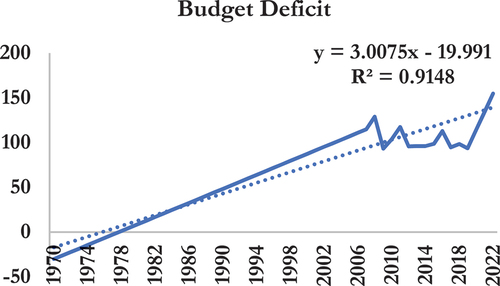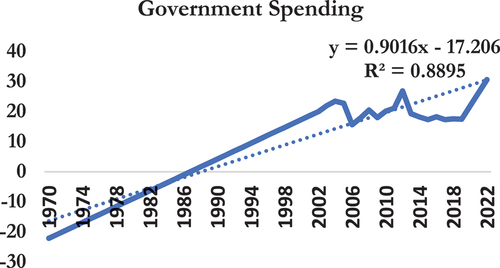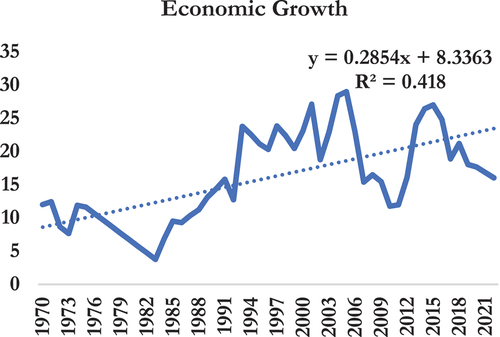Figures & data
Table 1. Variable description and data source
Table 2. Descriptive statistics
Table 3. Augmented Dickey-Fuller (ADF) unit root test
Table 4. Phillips-Perron (PP) test
Table 5. VAR lag order selection criteria
Table 6. Testing for level relationship among variables in the ARDL model
Table 7. Johansen tests for cointegration
Table 8. Estimated long-run coefficients from ARDL models (53 observations from 1970 to 2022)
Table 9. Estimated short-run coefficients from ARDL models (53 observations from 1970 to 2022)
Table 10. Diagnostic tests
Figure 8. plot of CUSUM for coefficients’ stability of ARDL model. Source: authors’ estimates from data 1970–2022.

Figure 9. plot of CUSUMSQ for coefficients’ stability of ARDL model. Source: authors’ estimates from data 1970–2022.
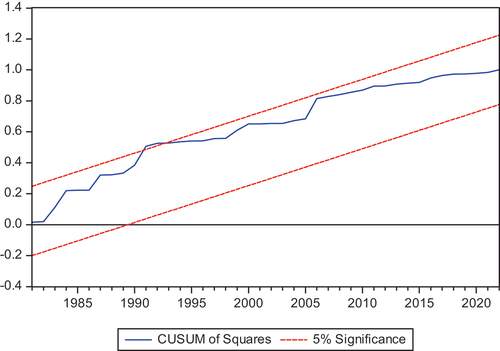
Data availability statement
The online repositories listed below provide access to all the pertinent data utilised for the analysis:
(1) Ghana Ministry of Finance and Economic Planning (https://mofep.gov.gh/public-debt/debt-data): This website provides access to debt data for Ghana. One can access data on public debt, including debt levels, composition, and servicing.
(2) Bank of Ghana (https://www.bog.gov.gh/economic-data/): The website of the Bank of Ghana offers economic data for Ghana. It includes a wide range of information, such as monetary indicators, exchange rates, inflation rates, balance of payments, and other macroeconomic data. The central bank of Ghana maintains this repository.
(3) World Bank (https://data.worldbank.org/country/GH): The World Bank’s website provides data on various aspects of Ghana’s economy and development. It covers various indicators, including economic, social, and environmental data. In addition, you can access information about GDP, poverty rates, education, health, infrastructure, and more.

